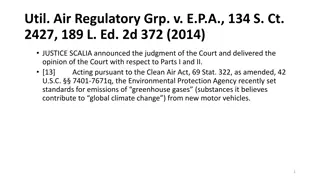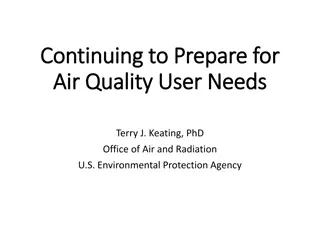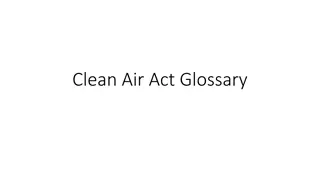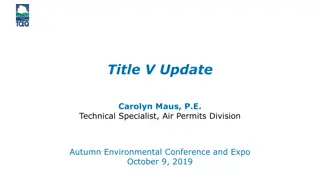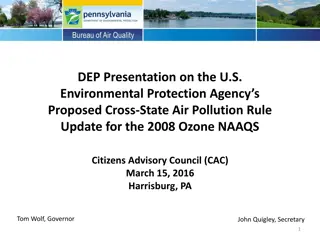EPA Regulations and Clean Air Act: Legal Interpretation
The case of Util. Air Regulatory Grp. v. E.P.A. (2014) addresses whether the EPA's regulations on motor-vehicle greenhouse gas emissions trigger permitting requirements for stationary sources under the Clean Air Act. It delves into the provisions of the Act concerning both stationary and moving sour
0 views • 79 slides
Air Quality Policies and Science Challenges in GEO-CAPE Horizon
The policies in play during the GEO-CAPE Horizon encompass a range of Clean Power Plans, NAAQS requirements, emissions controls for vehicles, air toxics reduction strategies, and more. Science challenges include emissions quantification, atmospheric composition analysis, air quality and climate link
0 views • 4 slides
Overview of Clean Air Act: Criteria Pollutants, NAAQS, HAPs, VOCs
The Clean Air Act establishes standards for criteria pollutants like ozone and particulate matter to protect human health. NAAQS set uniform air quality goals, while Hazardous Air Pollutants (HAPs) pose threats such as cancer. Volatile Organic Compounds (VOCs) and National Emission Standards for HAP
0 views • 26 slides
Environmental Permitting Updates: Autumn Conference Highlights
Carolyn Maus, a Technical Specialist in the Air Permits Division, presented key updates at the Autumn Environmental Conference and Expo on October 9, 2019. The presentation covered regulatory news, PBRs in Title V permits, major NSR summaries, and tips for PM and CAM reviews. Important changes in th
0 views • 24 slides
U.S. EPA's Proposed Cross-State Air Pollution Rule Update for 2008 Ozone NAAQS
The U.S. Environmental Protection Agency (EPA) issued the Cross-State Air Pollution Rule (CSAPR) in 2011, aiming to improve air quality by reducing power plant emissions across state lines. Challenges and subsequent revisions led to the proposed CSAPR Update Rule in 2015, targeting interstate air po
0 views • 27 slides
